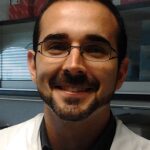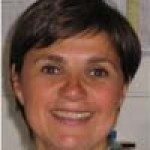Link to Pubmed [PMID] – 28377528
Link to DOI – e00259-1710.1128/mBio.00259-17
mBio 2017 Apr; 8(2):
Streptolysin S (SLS)-like virulence factors from clinically relevant Gram-positive pathogens have been proposed to behave as potent cytotoxins, playing key roles in tissue infection. Listeriolysin S (LLS) is an SLS-like hemolysin/bacteriocin present among Listeria monocytogenes strains responsible for human listeriosis outbreaks. As LLS cytotoxic activity has been associated with virulence, we investigated the LLS-specific contribution to host tissue infection. Surprisingly, we first show that LLS causes only weak red blood cell (RBC) hemolysis in vitro and neither confers resistance to phagocytic killing nor favors survival of L. monocytogenes within the blood cells or in the extracellular space (in the plasma). We reveal that LLS does not elicit specific immune responses, is not cytotoxic for eukaryotic cells, and does not impact cell infection by L. monocytogenes Using in vitro cell infection systems and a murine intravenous infection model, we actually demonstrate that LLS expression is undetectable during infection of cells and murine inner organs. Importantly, upon intravenous animal inoculation, L. monocytogenes is found in the gastrointestinal system, and only in this environment LLS expression is detected in vivo Finally, we confirm that LLS production is associated with destruction of target bacteria. Our results demonstrate therefore that LLS does not contribute to L. monocytogenes tissue injury and virulence in inner host organs as previously reported. Moreover, we describe that LlsB, a putative posttranslational modification enzyme encoded in the LLS operon, is necessary for murine inner organ colonization. Overall, we demonstrate that LLS is the first SLS-like virulence factor targeting exclusively prokaryotic cells during in vivo infections.IMPORTANCE The most severe human listeriosis outbreaks are caused by L. monocytogenes strains harboring listeriolysin S (LLS), previously described as a cytotoxin that plays a critical role in host inner tissue infection. Cytotoxic activities have been proposed as a general mode of action for streptolysin S (SLS)-like toxins, including clostridiolysin S and LLS. We now challenge this dogma by demonstrating that LLS does not contribute to virulence in vivo once the intestinal barrier has been crossed. Importantly, we show that intravenous L. monocytogenes inoculation leads to bacterial translocation to the gastrointestinal system, where LLS is specifically expressed, targeting the host gut microbiota. Our study highlights the heterogeneous modes of action of SLS-like toxins, and we demonstrate for the first time a further level of complexity for SLS-like biosynthetic clusters as we reveal that the putative posttranslational modification enzyme LlsB is actually required for inner organ colonization, independently of the LLS activity.









